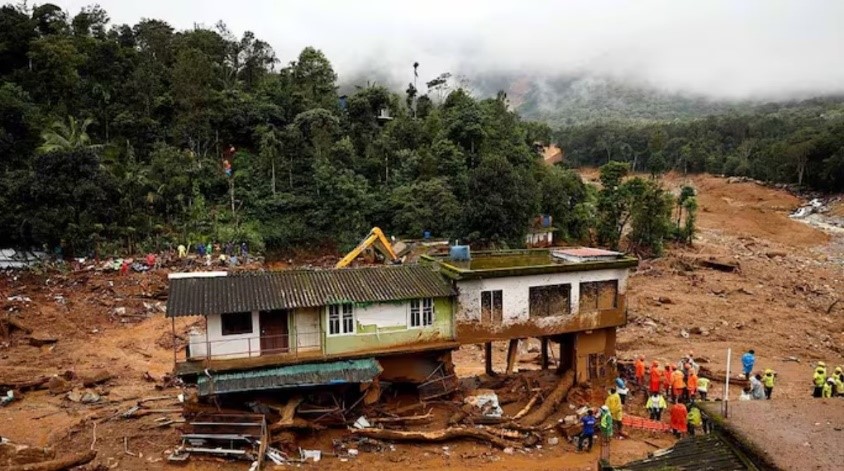
Climate Change and Rapid Infrastructure Development Fueling Landslide Surge in India
A recent study reveals a troubling rise in landslide frequency and intensity across India, driven by climate change and rapid infrastructure growth. The RMSI report comes shortly after a devastating landslide in Kerala's Wayanad, which claimed over 200 lives and wiped out two villages.
Conducted by RMSI, a geospatial and disaster assessment firm, the study analyzed landslide patterns in various Indian states, noting an alarming trend. With 30% of India's landmass covered by mountains, 22 states, along with regions like Puducherry and the Andaman & Nicobar Islands, are affected by landslides. States like Arunachal Pradesh, Sikkim, Kerala, and Uttarakhand are particularly at risk.
The report highlights climate change as a major factor behind the rising landslide threat. Increased rainfall intensity, driven by global warming, has significantly worsened conditions in many regions. For instance, the study projects that Mangaluru will see a 36% rise in annual rainfall intensity by 2050, while Guwahati may experience a 21% increase by 2080.
However, climate change isn't the only issue. India's booming infrastructure development, particularly in hilly areas, has further escalated the risk. The country's road network has expanded dramatically, growing from 399,942 sq. km in 1950 to nearly 6.3 million sq. km by 2021. Construction activities, deforestation, and vegetation loss in these regions have weakened slope stability, making landslides more frequent.
The report also notes that areas with slopes between 25-45 degrees are particularly prone to landslides, urging more careful management of construction in these zones. It calls for sustainable development practices, especially in regions with vulnerable rock types, to maintain slope stability and reduce landslide risk.
As India balances the need for development with environmental protection, the study underscores the importance of adopting sustainable infrastructure strategies in landslide-prone areas.